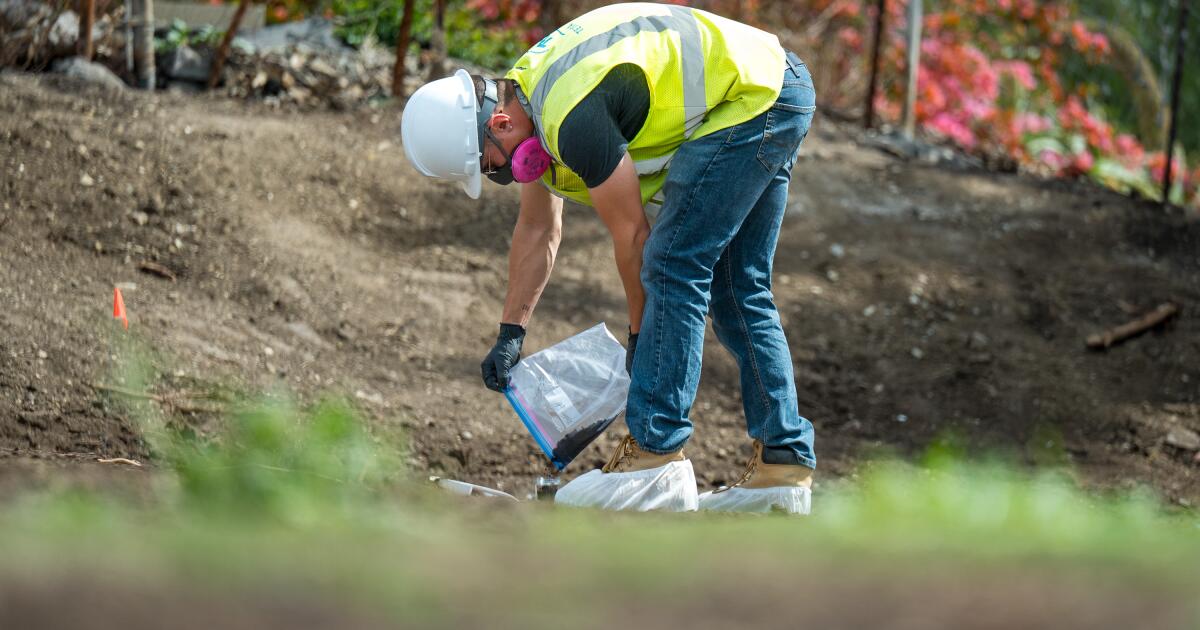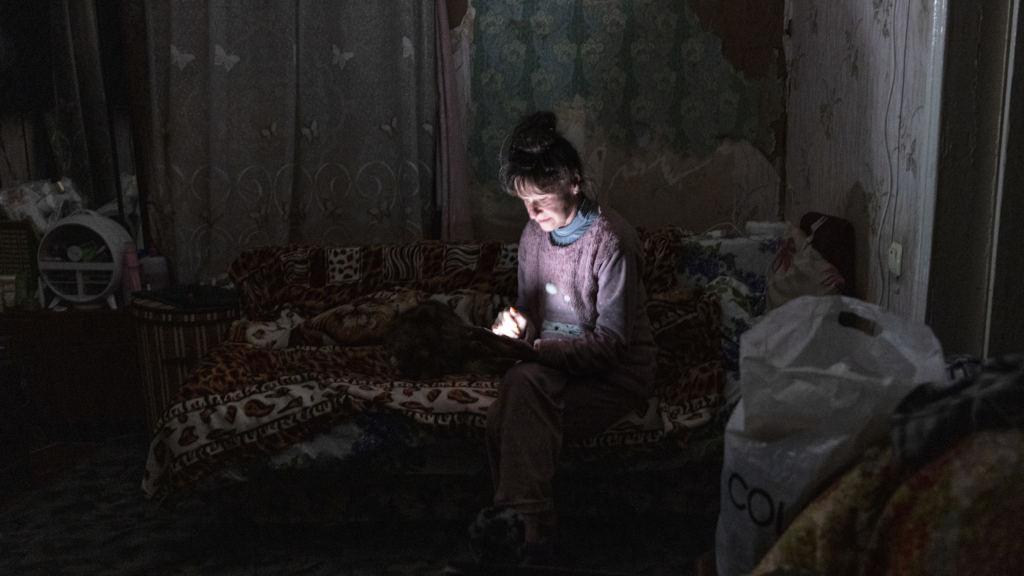A group of environmental researchers is calling on the Newsom administration to step in and pay for soil testing at thousands of homes destroyed in the Eaton and Palisades wildfires.
Nearly a dozen university professors wrote a letter Wednesday to Gov. Gavin Newsom and California Environmental Protection Agency Secretary Yana Garcia, imploring state officials not to abandon California’s wildfire-recovery protocols, namely the long-standing policy to conduct soil sampling at destroyed homes after cleanup crews finish removing toxic ash and a layer of topsoil.
Gov. Gavin Newsom attends a news conference at Odyssey Charter School as work begins to remove debris from the Eaton fire in January.
(Juliana Yamada / Los Angeles Times)
Because federal disaster agencies have repeatedly refused to conduct soil sampling to ensure burned-down homes do not contain unhealthy levels of toxic substances, the researchers argue it is imperative for the state to intervene in the ongoing recovery efforts for the Palisades and Eaton wildfires.
“At present, no parcel-specific soil testing is required or recommended by the State for residential properties impacted by the Eaton Fire and Palisades Fire,” the letter reads. “In our view, this poses a serious risk to public health and the economic recovery of the communities.”
The letter was signed by faculty members from nine universities, including USC and UCLA, many of whom are currently involved in conducting free soil testing for homeowners in and around the burn zones of the January wildfires. Among them, Andrew Whelton, a Purdue University professor who has investigated contamination following wildfires, said comprehensive soil testing was paramount to the health and safety of the fire-affected communities.
“The decision not to conduct soil testing the way it has been in the past — without any advanced warning — has really thrown personal safety and the ability of the community to rapidly recover up in the air,” Whelton said.
State officials said federal authorities are in charge of the wildfire recovery effort, including the decision on soil testing and remediation. State officials had asked FEMA to reconsider paying for soil testing, but the request was rejected within hours.
“The State continues to push for our federal partners to conduct comprehensive soil sampling as part of the debris removal process,” said Nefretiri Cooley, a spokesperson for CalEPA.
The university researchers highlighted recent soil testing efforts by the Los Angeles Times and the Los Angeles County Department of Public Health that found elevated lead and arsenic levels at destroyed homes cleared by federal debris removal crews in Altadena.
The Army Corps of Engineers, the agency supervising debris removal crews, declined to comment on the county results. A FEMA spokesperson said the agency still maintains that its cleanup approach — removing wildfire debris and up to 6 inches of topsoil — is sufficient to remove immediate public health risks.
The L.A. County Health Department has allocated up to $3 million to pay for soil testing, mostly for homeowners who showered in toxic smoke and ash downwind of the Eaton fire. But Whelton said these efforts on their own are not sufficient to analyze the risk.
“One soil sample will be analyzed that a homeowner submits to a commercial laboratory, and then the homeowner will have to interpret the data on their own and decide what to do,” Whelton said. “So that is not going to get people [back] to safe properties again.”

A worker clears debris from a home destroyed in the Palisades fire in Pacific Palisades in April.
(Genaro Molina / Los Angeles Times)
Local officials continued to emphasize the need for a speedy recovery, in part because they are worried about the precipitous drop in tax revenue. Federal, state, and local governments could experience tax revenue losses from roughly $730 million to $1.4 billion due to the wildfires, according to the Los Angeles County Economic Development Corporation, a nonprofit focused on economic growth.
At a meeting earlier this week, L.A. County officials announced that a new program is expected to allow licensed architects and engineers to “self-certify” that residential rebuilds meet building code requirements, with the assistance of artificial intelligence software that reviews building plans. The initiative aims to significantly speed up the timeline for issuing building permits.
More than 10,000 properties were signed up to be cleaned by federal debris removal crews. So far, they’ve cleared around 4,700 properties, which are now eligible for rebuilding permits without soil testing.
In the past, disaster agencies soil testing at cleaned-up properties to ensure toxic substances did not exceed California’s standards for residential properties. At properties where toxic substances were found above state standards, disaster agencies ordered cleanup crews to return to remove more soil and perform additional testing.
If state officials walk away from their soil-testing policy, some environmental experts say hundreds of homes in Altadena and the Pacific Palisades will still be contaminated, potentially exposing returning residents to toxic metals, like lead. But perhaps more worrying, it could also set a precedent for California communities devastated by wildfires in the future.
In California, where 30% of the state’s population lives in high-risk fire zones where buildings intermingle with wilderness, destructive wildfires are inevitable. But after the Eaton and Palisades fires, many homeowners are confused about federal and state agencies’ responsibilities during disaster cleanup.
“It is certainly appropriate to have discussion about who’s responsible for soil testing and soil remediation after these wildfires,” Whelton said. “But because there was an abrupt decision by multiple government agencies to just not do it, that’s left a whole bunch of property owners with anxiety and an unclear path to how they’re going to make their property safe again — or if they want to return.”

